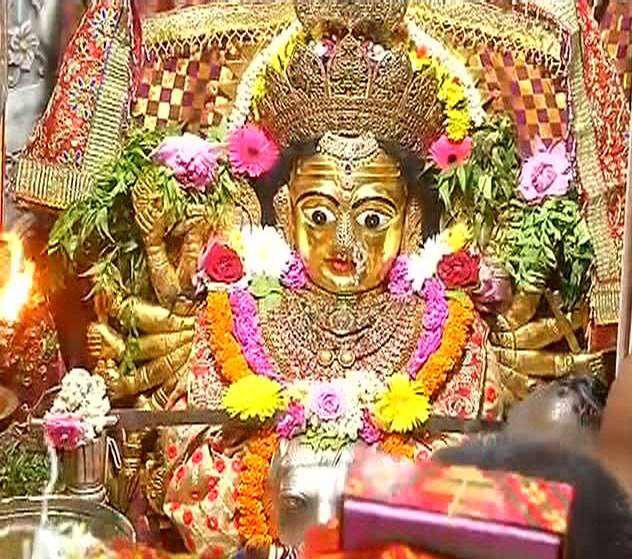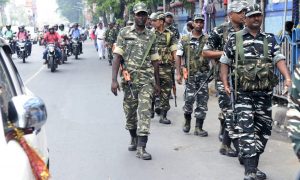How are Goddess categorised and the Folk Goddesses

Folk deity Mumba Devi on whose name the city of Mumbai gets name.
Many a times we hear some goddesses, who are not popular or may not be necessarily coming from any perfect background as Vedas or Puranas.
Indian knowledge base categorizes itself in 3 categories Shruti, Smruti and Puran
- Shruti are the highest level of scriptures. Shruti literally means “heard one”, the Rishis have heard the philosophy from the authorities and taken into the life and then taken into main stream scriptures. 4 Vedas are part of Shruti. Vedas are further bifurcated into Samhita, Aranyaka, Brahmanya, Upanishada.
- Smriti are secondary to Shrutis. All scriptures not part of Shruti are categorized into Smriti. Smriti literally means “one which is remembered”.
- Puran are the scriptures which are in story mode. It’s difficult to understand Shruti for a novice. Puran are taken into consideration to make people understand 1st step of knowledge gain. This is because stories are simple to understand for beginners. There are 18 Puranas. Puranas are sometimes considered as part of Smritis.
Anything which is not coming from above authentic sources is considered as folktales. We can see representations of female power and deities coming from all above sources.
Like Saraswati, Usha, Aditi from Vedas. Durga, Laxmi, Parvati from Smritis or Puranas etc.
But we can also hear some deities not mentioned under any of above scriptures such as Khandoba, Jyotiba, Viroba etc. likewise there are female deities coming from such source e.g Jakhai, Mariamman, Jogeshwari, Yedeshwari, Khodiyar Devi, Aai Mata etc.
We will explore few of such folk deities and the reasons why they came into mainstream. Few of them even considered as family deities (Kul Devata) by various clans in India.
Bhuval Mata of Rajasthan is Kul Devi of Chhajed and Bardia clan of Jain believers.
In entire south India and Maharashtra Mariamma or Mariaai is famous. She is considered to be goddess of rain. These deities are also not recently evolved their stories or evolution is as old as 200 BC etc.
Khodiyar Maa is a female deity appears in story of Mamaniya Gadhavi about 700 AD. Chudasama, Sawaria or Rana clans consider Khodiyar Maa as their Kul Devi.
One will be surprise to hear names coming from Islamic background for these female deities. Asanbibi is one of the deity worshiped and followed in Bengal area. Along with some forms like Chandbibi, Bahadabibi, Jaitunbibi etc they are 7 in numbers hence they are called as Satbibi.
Maisamma is very famous deity in Telangana, Andhra, Karnataka and Maharashtra.
Banai and Mhasai are wives of folk god Khandoba celebrated in Karnataka and Maharashtra.
Well one will see hundreds of folk deities in every nook and corner of India.
One would classify these folk goddesses according to their
- *Virginity status* – Some are Mothers while some are Kumaris (one who has not attained puberty)
- *Force * – Some are subtle and calm while others can be forceful and obvious
- Place of worship – Some are inside the village other can be at the boundary of the village or city
- Nature – Some are caring while other are fearful
One can trace many classifications of these goddesses.
One would ask why these goddesses are evolved from folktales, as we already have so many gods and goddesses in Shruti, Smruti and Puranas.
No matter the source of the deity, the truth and reality is they are connected to earth and people. They are part of life of people and their businesses.
Indian subcontinent is predominantly farming nation in one hand, while other hand to protect their land Indians are also holders of weapons.
Hence one will see the stories of all folk goddesses coming from either of the background i.e fertility or warfare. And hence all of them are considered as form of Parvati. In one hand she is goddess of fertility on the other hand she is warrior.
Parvati is power or energy or Shakti of Shiva. Parvati is considered as Trigunatmika meaning one who holds all 3 Gunas namely Satwa (Pure), Raja (Action), Tamo (inaction). Folks of this land have identified and related their manifestation of power or Shakti and made different forms of goddesses representing all three Gunas or one of the Guna.
During the evolution of time perspective of deities and personal worship took higher place post medieval period and Bhakti cult evolution. Hence one will see various forms of gods and goddesses evolving and representing deities from Puranas of Vedas e.g. Vithoba or Vitthal a folk form of Krishna, Jogeshwari a folk form of Yogini etc. Moreover the attacks for centuries from invaders from Afghan, Arab countries and Mughals also created a gap between true scriptures and folk beliefs and people adopted forms of gods and goddesses prevalent in their belief system.
They took a form of Gram devata (village deity) or Lok devata (deity of people).
May they get worshiped in any form or any method the truth cannot be ignored that they are part of life of people, their places, villages and even houses.
As said in Rigveda, this female form is अम्बितमे नदीतमे देवितमे greatest among Motherhood, greatest among the life giver and greatest among the goddess, which can be applied to folk manifestations also.
Compiled by: Dr Sandeep Sadanand Chaugule






















 WhatsApp us
WhatsApp us
Pingback: He paused 롤듀오 during Arunachal Pradesh under 롤대리 네임드 last day.
Pingback: Best place to buy prescription medications safely online overnight
Pingback: imitation bvlgari gold necklace
Pingback: paito hongkong
Pingback: 출장서비스
Pingback: uniccshop.bazar
Pingback: fun88.viet
Pingback: replica watch info
Pingback: order THC concentrates online
Pingback: bitcoin evolution review
Pingback: bitcoin informacion
Pingback: https://junkcarsgone2day.com/usa/junk-car-removal/pa/west-chester/
Pingback: replica rolex
Pingback: Harold Jahn
Pingback: replica rolex
Pingback: faux bulgari imitations for sale
Pingback: bandar77
Pingback: Vitek VT-1764 manuals
Pingback: dewa jitu
Pingback: breitling replica
Pingback: Scott Schulte
Pingback: Buy Glo Carts
Pingback: grow your own mushroom kit australia
Pingback: good cc shop
Pingback: grow psychedelic mushrooms,
Pingback: sportsbet
Pingback: magic mushroom microdose for sale
Pingback: sbobet
Pingback: tu peux vérifier
Pingback: corporate cornhole
Pingback: บอลยูโร 2024